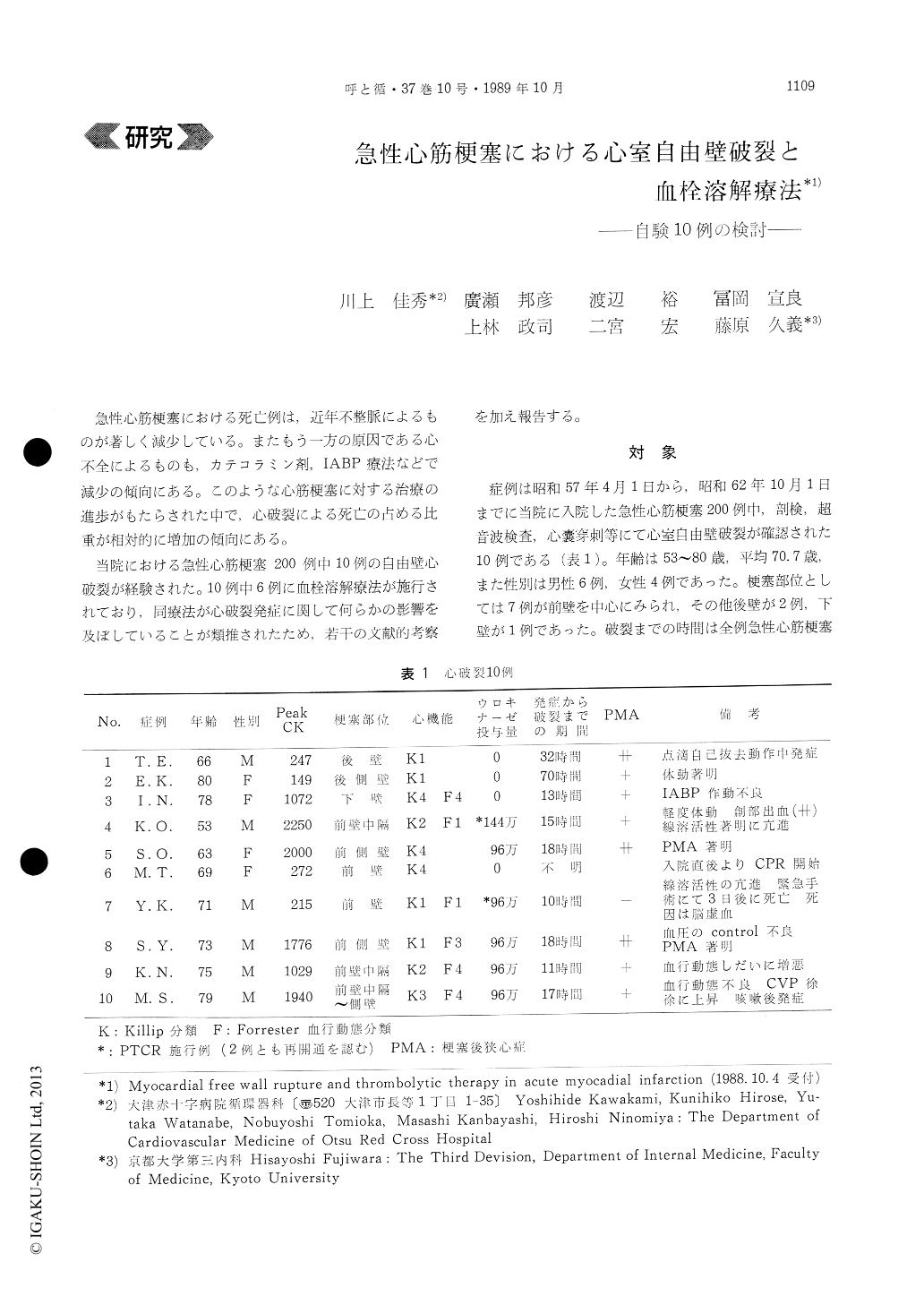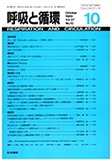Japanese
English
- 有料閲覧
- Abstract 文献概要
- 1ページ目 Look Inside
急性心筋梗塞における死亡例は,近年不整脈によるものが著しく減少している。またもう一方の原因である心不全によるものも,カテコラミン剤,IABP療法などで減少の傾向にある。このような心筋梗塞に対する治療の進歩がもたらされた中で,心破裂による死亡の占める比重が相対的に増加の傾向にある。
当院における急性心筋梗塞200例中10例の自由壁心破裂が経験された。10例中6例に血栓溶解療法が施行されており,同療法が心破裂発症に関して何らかの影響を及ぼしていることが類推されたため,若干の文献的考察を加え報告する。
We investigated the relation between myocardial free wall rupture and thrombolytic therapy in 200 patients with acute myocardial infarction (AMI).
Ten of 200 patients (5.0%) were complicated with cardiac rupture, and all of them died within 70 hours after the onset (29% of the deceased after AMI).
The pathophysiologic study of 5 patients under-going autopsy after cardiac rupture was performed. In 4 patients receiving thrombolysis, autopsy revea-led massive hemorrhagic infarction and teared le-sion near the center of infarcted area. We assessed that the location of teared lesion might be influen-ced by broad hemorrhagic infarcted area following thrombolytic therapy.
The incidence of cardiac rupture was slightly higher in the group receiving thrombolysis in the early stage of AMI than conventional treatment group.
Among the patients receiving thrombolytic thera-py, some cases revealed markedly increased fibri-nolytic activity. This suggested that such elevated fibrinolytic activity might induce massive hemor-rhagic infarction and might be an important factor contributing to the cardiac rupture. Thrombolytic therapy has been frequently reported to improve cardiac function and prognosis, but our study sug-gests that thrombolytic therapy must be evaluated moreover as one of the risk factors of cardiac rupture.

Copyright © 1989, Igaku-Shoin Ltd. All rights reserved.


